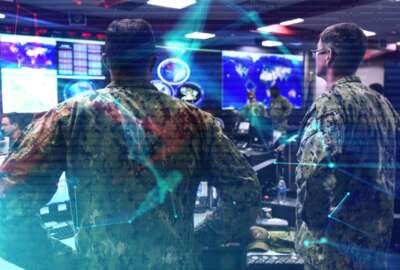Can CIOs and CAOs play well in the sandbox?
It has always frustrated Mike Sade why chief information officers and chief acquisition officers often seem to communicate disparate messages regarding their ag...
Commentary by Mike Sade President, Sade Associates, LLC
The Federal IT Acquisition Reform Act (FITRA) continues to focus on the role of the chief information officer. It has always frustrated me why CIOs and chief acquisition officers often seem to communicate disparate messages regarding their agencies’ goals and objectives. This leads to confusion within their organizations and potential industry partners. 
It does not seem difficult to merge the two, and often has worked well through communication and leadership. In my 30-plus years in government procurement, I have seen many reasons why this concept doesn’t work. I have also been fortunate to witness when and why it did work. Where I have seen it work there were a number of principles in place that made it work and several behaviors that made it difficult to work.
For reasons of anonymity and to protect the guilty, I will not identify specific agencies where I witnessed whether or not the CIO and CAO relationship worked but will offer suggestions on how every agency at all levels can make this work.
Here are suggestions on how to make the relationship work:
Mutual understanding
A key concept to a successful relationship is a mutual understanding and open communication. The CIO and CAO must be open and honest about their respective objectives. They must be open to understanding the limitations that affect their ability to act. CIOs must be honest about budget, technology and preferences.
CAOs must be clear about limitations due to statute and regulation but be open to leveraging the flexibility of the statutes and regulations without regard to preferences.
Ultimately, the mutual understanding must be centered on finding the solution and cost structure that are most reasonable to accomplish the agency mission.
Sending the combined message
Once there is mutual understanding, the CIO and CAO must send out a combined message in all communications and more importantly their actions.
I was involved in an agency where there was an agreement in principle, but as a senior procurement person, I was not invited to CIO meetings. I had no idea what was discussed and, more importantly, what the agency CIOs discussed that involved procurement that could not be accomplished.
I started showing up, uninvited, to the meetings and, at first, it was awkward. Soon, I was recognized and even got a place card at the table because I was able to add to the discussion and provide insight into the direction the agency could take.
Soon, the agency CIOs at the bureau level began to include their respective key procurement personnel in their meetings.
Acting as a team at all levels
Often I have been involved in agencies that say the “right” thing at the top level at conferences, symposiums and internal meetings. But the message is vacuum ware because both the CIO and the CAO did not communicate and ensure it was either understood or enacted within their respective organizations.
As leaders, both the CIO and the CAO must conduct business that ensures their respective organizations adhere to the message and mutual understanding.
At all levels, the CIO and CAO must ensure all meetings with vendors or mission personnel both organizations represented.
Joint involvement in business case development
- Budget: I once experienced a situation where the CIO was working with the procurement office on an upgrade to a system. All things were working well, however, it turned out the upgrade required a new facility that was not in the budget. The CIO and CAO must work together to ensure all the parts and pieces are coordinated with the right players.
- Acquisition plans and schedules: A business plan must include the acquisition plan. I have reviewed too many business cases where there is no coordination with the procurement office. I have witnessed too many business cases that included an acquisition strategy that could not be accomplished in terms of method or schedule. The CIO and CAO must work together to ensure what is promised regarding an acquisition strategy and schedule can be accomplished within the regulations.
Joint involvement in Oversight
Recognize that ultimately the program manager is ultimately responsible for the outcome. Often CIOs and CAOs are not accountable to the Government Performance and Results Act (GPRA) outcomes, but share responsibility of meeting those goals. The ultimate goal is to accomplish an agency mission. The teams assigned to accomplish the outcome cannot be solely focused on their respective interests but ultimately focused on achieving the mission goal.
Clear lines of authority and responsibility
The challenge is that the CIO and CAO are so dependent on each other. Rarely are there clear lines of responsibility and there is too much finger pointing. So, part of this exercise is to establish clear delineation of the lines of lead and contributor because, remember, we’re all in the car together.
Reward the team and not the individual at all levels. One of my fondest moments was when a team recognized for success included program, IT and procurement folks at the working level.
If FITRA is going to work, the CIO and CAO must have a closed door meeting jointly with their respective staff and communicate a joint message, the understanding of the limitations of each organization and the common performance measures. To ensure all levels of their respective organizations act as a team to accomplish mission results, the CIO and CAO should include incentives in their respective performance plans and those incentives should flow down to their staff at all levels.
Finally, I believe the CIO and CAO (don’t forget the chief budget officer) should all sign the business plan.
Mike Sade is a former senior procurement executive at the Commerce Department, assistant commissioner in GSA’s Federal Acquisition Service and a director of acquisition support at the Homeland Security Department’s Customs and Border Protection directorate. He is now president of Sade Associates.
Copyright © 2024 Federal News Network. All rights reserved. This website is not intended for users located within the European Economic Area.





